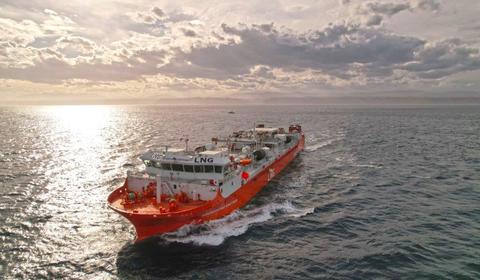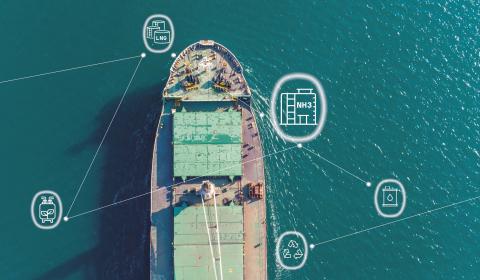
UPDATED RULES FOR FUTURE-PROOF BUNKERING
Shipowners are preparing to meet IMO’s decarbonization targets, but they can only choose among the renewable and low-carbon fuels that are available where they operate. These include LNG and, eventually, ammonia. Bunkering vessels – specially equipped to handle and transfer these fuels – are thus essential to securing this supply.
At Bureau Veritas (BV), we have updated our NR 620 Rules for bunkering ships to guide our clients in safely keeping pace with these changes.
Boosting bunkering safety for today’s fuels – and tomorrow’s
Overall, bunkering has seen a long-term trend toward the standardization of regulations to promote safety on a global scale. BV first played its part in 2015 with the original NR 620 regulation, followed by a 2022 update to align with industry standards and reflect new regulations on components of ship-to-ship (STS) transfer systems.
Now, the growing focus on future fuels has prompted a second update. The July 2023 edition includes additional guidance around ammonia fuel. This update builds on the established classification rules for LNG bunkering ships to add a new chapter focused on ammonia bunkering ships.
Safety is the first priority both onboard bunkering vessels, and in how they are operated. With this update, we aim to help prevent accidents by providing context for bunkering vessel designers – particularly those handling newer fuels.
The risks of LNG handling are relatively well known, and it has generally been shown to have a fairly strong track record in safety. But there are greater risks posed by ammonia storage and bunkering, given its higher toxicity and lower density. This means that leak prevention and containment are of paramount importance during the bunkering process.
Bunkering: a key catalyst of the energy transition
With newly ambitious IMO targets, and regional emissions regulations beginning to take effect, a demand is growing for relevant infrastructure to support the fuel transition.
Today, LNG is the fuel most widely available through STS bunkering. Methanol has also been gaining momentum over the past year, but the future remains ambiguous. Besides technical and commercial factors, carbon output is crucial. If methanol and ammonia are not certified as low-carbon from a well-to-wake perspective, then there may be little environmental advantage to using these fuels.
Long-haul LNG- or ammonia-fueled ships need thousands of cubic meters of fuel, making STS refueling the best option. The development of a sufficient number of bunkering ships to carry these fuels will therefore play a key role in determining which fuels are commonly adopted by shipowners.
The choice of fuel for long-haul ships also has implications for the design of the bunkering vessels themselves. They may be expected to run on the same fuels that they carry – for practical reasons, but also to set an example. This has tended to be the case for LNG ships, and technology should soon follow to allow ammonia-carrying bunkers to run on ammonia.
Additionally, many of the newer fuels have a lower caloric value than standard fuels or LNG. Therefore, larger bunkering ships may be required, creating new challenges, such as questions of maneuverability and mooring.
Tailoring our Rules to industry needs
Currently, slightly over 35% of the global LNG bunkering vessel fleet both in service and on order is BV-classed. With our proximity to this large portion of this sectors’ shipowners, we are well placed to address their concerns. By promoting safe practices and providing new guidance, we intend that the update to NR 620 will ease their transition to newer fuels.
“We are committed to using our rich experience and global network to provide clear, practical advice to all stakeholders in the maritime energy transition. This update to NR 620 reflects our ongoing commitment as a pioneer in shaping safety practices and to help protect lives and assets at sea.” Carlos Guerrero, Global Market Leader, Gas Carriers










